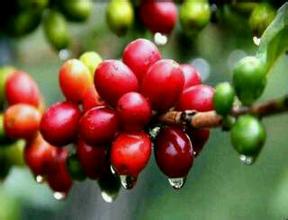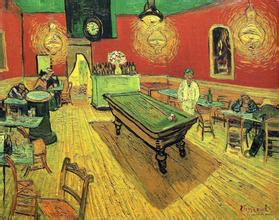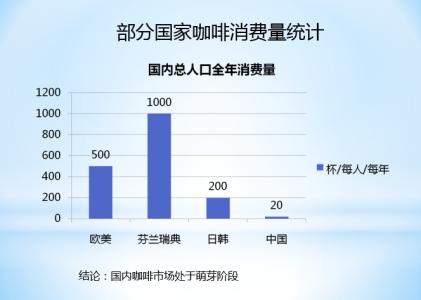Kenya Coffee handling-Starbucks Kenya Coffee Bean theme
Kenya Coffee handling-Starbucks Kenya Coffee Bean theme
Kenya is bordered to the north by Ethiopia, the origin of Arabica coffee trees, but it was not until the beginning of the 20th century that coffee cultivation began. In the 19th century, missionaries introduced Arabica trees from the leaves, but did not plant them in large quantities until 1893. Brazil's ancient "bourbon" coffee seeds were introduced to cultivate coffee on a large scale. In other words, the current Kenyan coffee is of Brazilian origin, and because of the water, climate and handling methods, the flavor of Kenyan beans is quite different from that of Brazilian beans.
Brazilian coffee is planted at a low altitude, with soft texture and no obvious sour taste. In contrast, Kenyan coffee trees are mainly concentrated on the slopes near Mount Kenya, about 4 to 6500 feet above sea level, which is suitable for coffee beans to develop their flavor, because the mountain temperature is lower and the growth is slower, and the aromatic components of coffee beans are fully developed. the acidity of the fruit is more obvious and the texture is harder. In addition, Kenya was an early British colony, and the British had established a perfect cultivation and quality control system. After Kenya became independent, the coffee industry made great strides on its existing foundation and became a foreign exchange earning industry in Kenya.
Starbucks does not buy coffee at auction; instead, our suppliers buy the coffee they think Starbucks will like and send samples to Starbucks. Political conditions, drought and the cultivation of new high-yield coffee trees have made Starbucks still interested in Kenya as a coffee supplier.
Starbucks mainly buys coffee based on its taste, which is why we don't specify a Kenyan grade (such as "AA" or "A"). These grades only represent the size of coffee beans.
Anecdotes:
The Kenyan Plateau is one of the most important agricultural producing areas in Africa, and glaciers have been found on Mount Kenya, the second largest peak in Africa. The unique geographic conditions are very suitable for wildlife, so they are also of great scientific and economic value.
Agricultural products include tea, coffee, cotton, wheat, sugar, fruits, vegetables, dairy products, beef, pork, poultry and eggs.
Kenya declared its independence from British rule on December 12, 1963. Both Swahili and English are the official languages of Kenya.

Recommended for more exciting content:
How do you drink Kenyan coffee? the taste of Kenyan coffee
Harvest season for coffee planting in Kenya
The difference between washing and Solar Coffee in Kenya A brief introduction to the taste production area
Kenyan coffee cowpea hand pot making experience coffee hand brewing process
Important Notice :
前街咖啡 FrontStreet Coffee has moved to new addredd:
FrontStreet Coffee Address: 315,Donghua East Road,GuangZhou
Tel:020 38364473
- Prev

Brazil (South America) Santos Coffee-which big country is Brazil in South America?
There are many kinds of coffee here, but its industrial policy is large and cheap, so there is not much premium coffee, but it is a good choice for mixing other coffees. One of the most famous is Sandos Coffee, which tastes mellow and neutral. It can be boiled directly or mixed with other kinds of coffee beans to form a comprehensive coffee. It is also a good choice. Other kinds of Brazilian coffee such as
- Next

Description of Taste and Flavor of Tanzanian Coffee beans introduction of varieties produced by grinding scale
Tanzania coffee beans taste characteristics description grinding scale production area varieties introduction coffee is the main cash crop in Angola, is the primary export of Burundi, is the largest foreign exchange industry in Kenya in the past. Ethiopia is known as the hometown of coffee, C ô te d'Ivoire occupies an important position in coffee production in the world, and Uganda is famous for its production per unit area in Africa. A glass of water to wash Yega snow
Related
- Detailed explanation of Jadeite planting Land in Panamanian Jadeite Manor introduction to the grading system of Jadeite competitive bidding, Red bid, Green bid and Rose Summer
- Story of Coffee planting in Brenka region of Costa Rica Stonehenge Manor anaerobic heavy honey treatment of flavor mouth
- What's on the barrel of Blue Mountain Coffee beans?
- Can American coffee also pull flowers? How to use hot American style to pull out a good-looking pattern?
- Can you make a cold extract with coffee beans? What is the right proportion for cold-extracted coffee formula?
- Indonesian PWN Gold Mandrine Coffee Origin Features Flavor How to Chong? Mandolin coffee is American.
- A brief introduction to the flavor characteristics of Brazilian yellow bourbon coffee beans
- What is the effect of different water quality on the flavor of cold-extracted coffee? What kind of water is best for brewing coffee?
- Why do you think of Rose Summer whenever you mention Panamanian coffee?
- Introduction to the characteristics of authentic blue mountain coffee bean producing areas? What is the CIB Coffee Authority in Jamaica?

